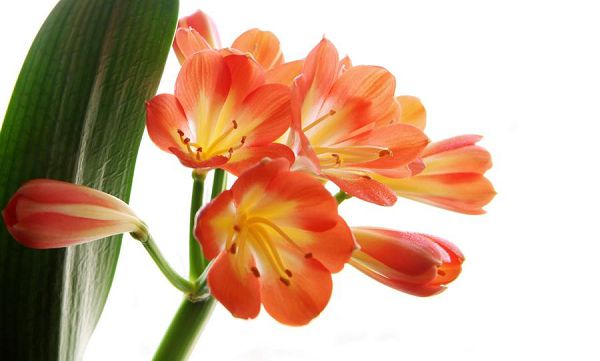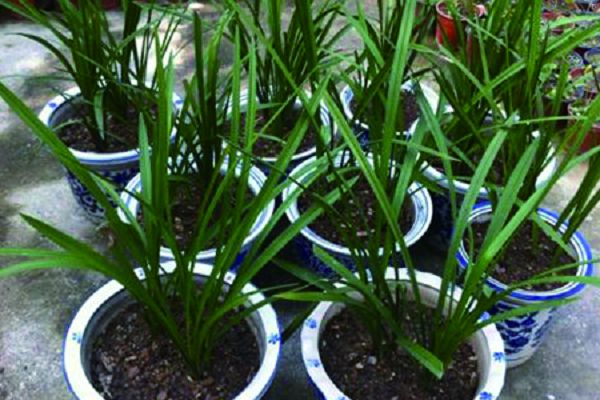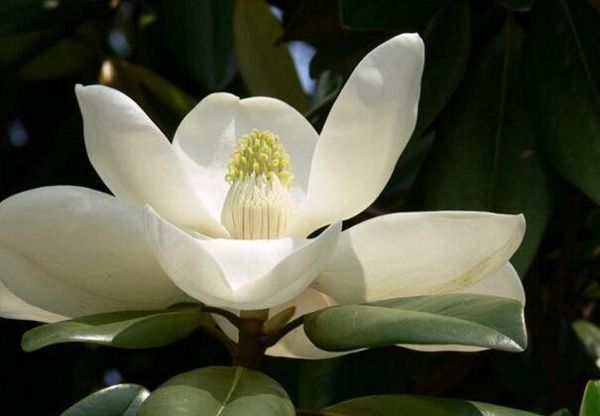What about the rotten leaves of the orchid?

Morphological characteristics of Cymbidium
The root of Cymbidium is fleshy fibrous, milky white and very stout. The root system is thick and fleshy. The persistent leaf base of the stem base of Cymbidium expands and embraces each other into a pseudobulb. Leaves from the root of the short stem in a two-row stack, neatly arranged, broad band-shaped, round top, hard and thick texture, and glossy and veined. Basal leaves thick, sword-shaped, leaf blade leathery, dark green, glossy, banded, 30-50 cm long, up to 85 cm long, 3-5 cm wide, lower attenuate, alternate, entire.
Scape is extracted from leaf axils, and if it is preserved from the seed, it will generally blossom when it reaches 15 leaves. The flower stem is ca. 2 cm wide; the floret is stipitate, umbellate at the tip of the flower, funnel-shaped, erect, yellow or orange or orange-red. Umbels terminal, flowers erect, with several imbricate bracts, each with 7-30 florets, up to more than 40. Perianth lobes 6, connate. Smiling gentleman orchid flowers slightly drooping, perianth narrowly funnel-shaped. [2] pedicel 2.5-5 cm long; flowers erect upward, perianth broadly funnel-shaped, bright red, inner surface yellowish; perianth tube ca. 5 mm, outer whorl perianth lobes slightly convex, inner whorl apical retuse, slightly longer than stamens; style long, slightly protruding outside perianth.
Berries purplish red, broadly ovoid. Flowering period from New Year's Day to the Spring Festival, mainly in spring and summer, can blossom throughout the year, sometimes in winter, but also in summer between June and July. Fruit ripening period of about October, belonging to berries, purplish red. Flowers and leaves are not beautiful.
The reason for the rotten leaves of Cymbidium
Cymbidium will appear the phenomenon of rotten leaves, maybe the plant is infected, which can easily lead to rotten leaves. At this time, the leaves of Cymbidium will have pathological changes, the leaves begin to rot from the base, gradually spread, and in serious cases, the whole leaves will rot.
Secondly, the more likely reason is that it is overwatered. When raising orchids, we should know that orchids are fleshy roots and have poor ability to absorb water. if they are watered too much, the basin soil will be too wet, and it is easy to have rotten leaves at this time. It should be noted that if the watering accidentally watered the center of the leaves or rain for a long time, it is also easy to appear rotten leaves.
In the cultivation of magnolia, we should prevent the phenomenon of rotten leaves.
Watering should be appropriate, generally watering should be along the flowerpot, not on the leaves, watering water should not be too much, proper control, so that the soil will not be too wet. In addition, in the often rainy season, we also need to pay attention to prevent the rain, so as to prevent the leaves of the magnolia from being drenched and rotten for a long time.
In addition, if you find that Cymbidium has rotten leaves, cut off the rotten parts in time, sprinkle them around the leaves with disinfectant, and then keep them in a cool and ventilated place for maintenance.
Related
- Is the orchid suitable for indoor use? Is it good for the body?
- How to prevent the empty root of orchids?
- What to do after the crab claw orchid is withered?
- Why are the leaves of orchids always yellow? Fertilizing and watering.
- Can the root of the gentleman orchid be saved if it is rotten?
- Diagnosis and treatment of cotton-blowing beetle insects in Cymbidium
- There is a way for a gentleman's orchid to rot.
- What is the most suitable temperature and humidity for the orchid?
- How to raise a gentleman's orchid? Cultivation techniques of Cymbidium
- How to prepare the nutritive soil for the cultivation of Cymbidium



